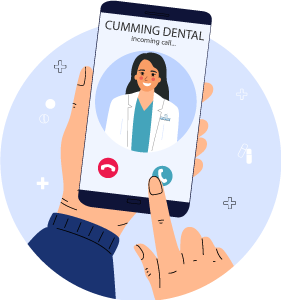What is Sedation Dentistry?
Imagine your child undergoing complex dental treatment like a root canal, extraction, or oral surgery. When treatment is complete, your child will have no recollection of the time it took, the pain, the noise, or the discomfort. We are pleased to offer your child the option of comfortable, safe, and effective sedation dentistry. Our pediatric dental patients who benefit from sedation dentistry have:
- A fear or anxiety of being at the dentist
- A hard time sitting still for long periods of time
- A hard time getting (and staying) numb from anesthetics
Sedation dentistry allows your pediatric dentist to provide a variety of dental treatments safely and comfortably for children who experience anxiety when visiting the dentist. There are several benefits to sedation dentistry, including:
- No memory of undergoing the procedure
- No sense of time while under sedation
- No sense of smell or sound
- No fear or anxiety during treatment
Levels of Sedation
Sedation dentistry is closely regulated by law, and there are three sedative states at which your child’s dentist can administer treatment: mild sedation, moderate sedation, and deep sedation.
- Mild Sedation — Anxiolysis is the lightest form of sedation dentistry and is often used for children with mild anxiety, longer procedures, or more complex situations. Mild sedation is usually administered orally. Your child will remain awake or very sleepy throughout the entire procedure and will be able to breathe normally, but he or she will feel a great sense of relaxation. Patients typically recover from anxiolysis sedation within a few hours after the procedure is complete. Nitrous oxide inhalation (laughing gas) is another form of mild to moderate sedation that results in relaxation during treatment.
- Moderate Sedation — Used for patients with moderate dental anxiety and for patients who need longer or more complex procedures, conscious sedation often refers to the use of light IV sedation. With conscious sedation, your child will remain awake throughout the procedure but will be in a deep state of relaxation.
- Deep Sedation — Patients receiving deep sedation go between consciousness and unconsciousness during their dental procedure. Patients often have no recollection of the treatment and are unable to respond to commands even if they are awake at times during the procedure.
Nitrous Oxide Laughing Gas
Nitrous oxide, or laughing gas, is the most frequently used method for easing mild-to-moderate anxiety in children. Administered through a small mask that fits over your child’s nose, it is an effective way to calm anxiety.
Your youngster will be asked to breathe through his or her nose and not through the mouth. As the gas begins to work, your child will become calm, although he or she will still be awake and able to talk with the dentist.
At the end of the appointment, your little one will resume breathing regular oxygen, and all the effects of nitrous oxide will disappear. As your child gets older and becomes more comfortable during dental visits, nitrous oxide may no longer be necessary.
Conscious Oral Sedation
Our dentists will ensure that your son or daughter feels comfortable with their dental cleaning or dental procedure. Conscious oral sedation is a safe and effective procedure to induce relaxation and provide a painless appointment.





